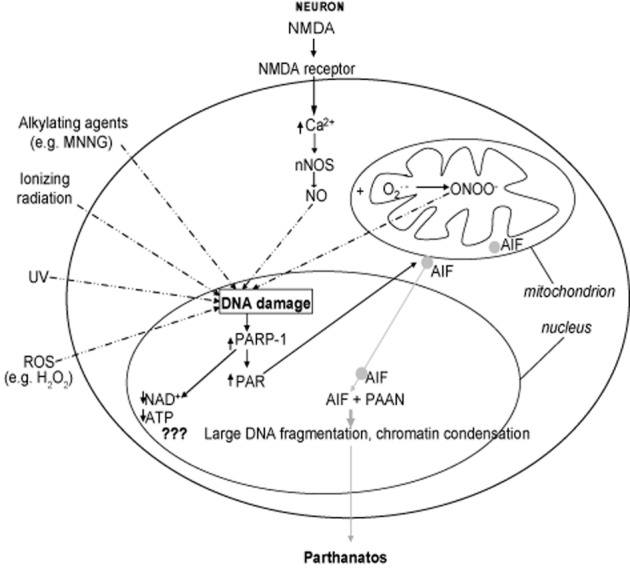Cells die by a variety of mechanisms. Terminally differentiated cells die in a variety of disorders, in part, via parthanatos, a process dependent on the activity of poly (ADP-ribose)-polymerase (PARP). Creative Bioarray provides parthanatos detection services to make your research more accurate and convenient.
Parthanatos, also known as PARP-1 dependent cell death, is a new form of programmed cell death activated by PARP-1 based on DNA damage. When DNA damage chemicals or by-products of oxidative stress in the environment damage DNA, PARP-1 is over-activated, causing PAR products to accumulate. This further causes AIF to be released from the mitochondria, carries MIF to the nucleus, and finally cuts the chromosomal DNA to induce cell death.
This cell death is widely present in different organs and different diseases, including ischemia-reperfusion injury, glutamate neurotoxicity, Parkinson's disease, Alzheimer's disease, multiple sclerosis, Huntington's disease, heart disease, diabetes and inflammatory diseases.
Parthanatos is a unique, caspase-independent, cell-death pathway that is distinct from apoptosis, necrosis or other identified forms of cell death. Our services include but are not limited to:
Features of Parthanatos
 The mechanism of Parthanatos(Fatokun AA et al. 2014)
The mechanism of Parthanatos(Fatokun AA et al. 2014)
We provide services for detecting regulatory factors in parthanatos-related pathways, such as the detection of PPAR, AIF and other related markers, including but not limited to WB, PCR and other commonly used experimental methods.
In addition, it has been found that many human diseases are closely related to Parthanatos. We can help you screen your targets. By controlling the potential target sites of PARP-1, PAR and AIF, you not only can inhibit parthanatos but also control the deterioration of related diseases.
The time depends on the experiment content
If you are interested in our services, please contact us for more detailed information.
Reference:
Online Inquiry